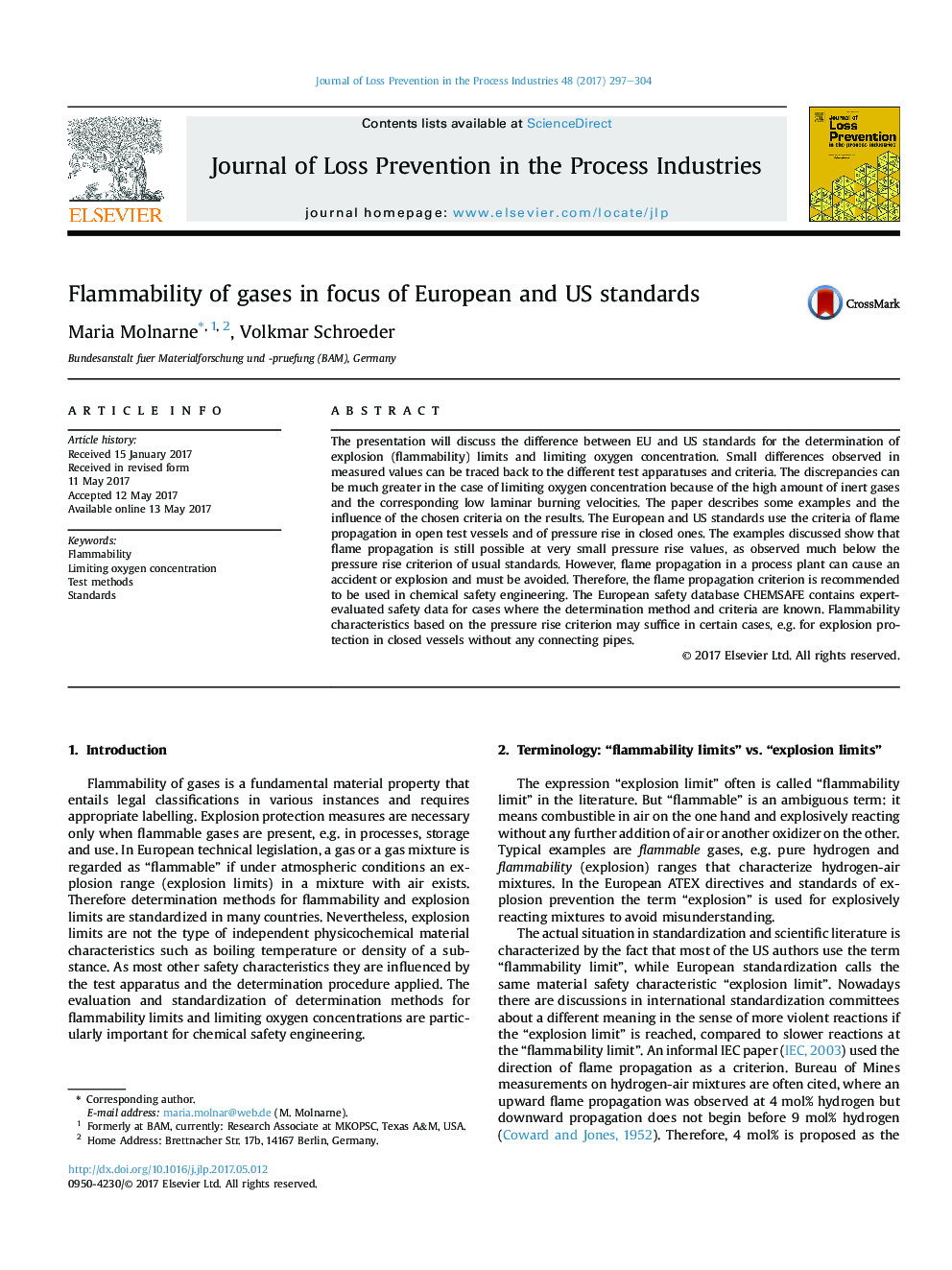| Article ID | Journal | Published Year | Pages | File Type |
|---|---|---|---|---|
| 4980393 | Journal of Loss Prevention in the Process Industries | 2017 | 8 Pages |
Abstract
The presentation will discuss the difference between EU and US standards for the determination of explosion (flammability) limits and limiting oxygen concentration. Small differences observed in measured values can be traced back to the different test apparatuses and criteria. The discrepancies can be much greater in the case of limiting oxygen concentration because of the high amount of inert gases and the corresponding low laminar burning velocities. The paper describes some examples and the influence of the chosen criteria on the results. The European and US standards use the criteria of flame propagation in open test vessels and of pressure rise in closed ones. The examples discussed show that flame propagation is still possible at very small pressure rise values, as observed much below the pressure rise criterion of usual standards. However, flame propagation in a process plant can cause an accident or explosion and must be avoided. Therefore, the flame propagation criterion is recommended to be used in chemical safety engineering. The European safety database CHEMSAFE contains expert-evaluated safety data for cases where the determination method and criteria are known. Flammability characteristics based on the pressure rise criterion may suffice in certain cases, e.g. for explosion protection in closed vessels without any connecting pipes.
Related Topics
Physical Sciences and Engineering
Chemical Engineering
Chemical Health and Safety
Authors
Maria Molnarne, Volkmar Schroeder,
